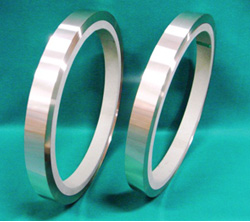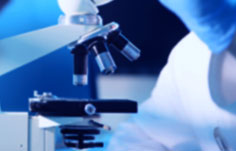Furukawa Electric Begins Mass Production of High Performance Copper Alloy Strips
- Product offers both high conductivity and good heat resistance -
Furukawa Electric Co., Ltd. has successfully developed EFTEC-550, a Cu-Cr-Mg copper alloy strip with high mechanical strength and heat resistance, for use as material on current loading components in next-generation vehicles and other machines. Production for EFTEC-550 has already started. Furukawa Electric has begun shipping samples to major connector manufacturers, and plans to produce 100 tons monthly in 2016 FY.
Background
Following technological innovations in next-generation vehicles such as hybrids (PHV) and electric vehicles (EV) as well as the development of computer networks, the transformation to large current and high voltage power (such as high capacity server power supplies and wireless base terminals for cellphones) continues to advance.
Therefore, current loading components (such as terminals, connectors, and relays) are increasingly required to demonstrate reduced electricity loss and self-heating, as well as to maintain good electrical connection reliability even in high temperature environments. Materials for such components must offer both high conductivity and good heat resistance (stress relaxation resistance(Note 1)).
Although Furukawa Electric already provides high conductivity copper alloys (such as EFTEC-3(Note 2) and EFTEC-64T(Note 3)), there was a growing need for high performance copper alloys that offer good stress relaxation resistance and connection reliability.
Content
Furukawa Electric has recently developed a copper alloy strip which adds trace amounts of Mg to a Cu-Cr precipitation-hardened alloy(Note 4). The newly developed EFTEC-550 high performance copper alloy strip offers high conductivity and good heat resistance (stress relaxation resistance) which are not possible with conventional alloys. Furukawa Electric has already begun manufacturing the product.
EFTEC-550 demonstrates a conductivity of 80% IACS, a tensile strength of 550 MPa, and a stress-relaxation rate of 15%. Furukawa Electric has already begun shipping samples for use in PHV and EV terminals and connectors, and in the current loading components and battery breaker components of large servers and high capacity relays. Furukawa Electric has received positive feedback on the samples, and is beginning to ship out products.

Development product and characteristic comparison with other materials
| EFTEC-3 (C14410) |
EFTEC-64T (C18040) |
EFTEC-550 (newly developed) |
|
| Electrical characteristic: Conductivity (%IACS) | 85 | 73 | 80 |
| Springiness: Tensile strength (MPa) | 350 | 560 | 550 |
| Heat resistance: Stress-relaxation rate (%) | 50 | 40 | 15 |
*Stress-relaxation rate: After being held for 1,000 hours at 150°C with a stress load of 80% of 0.2% yield strength.
(note 1)Stress relaxation resistance:
A number representing the amount of plastic deformation (settling amount) upon removing a load after a spring is deformed and retained at a high temperature. The lower the relaxation rate, the better the characteristic is and the better the springiness is retained in high temperature environments.
(note 2)EFTEC-3:
One of Furukawa Electric's copper alloy strips. It is composed of Cu-0.15%Sn.
(note 3)EFTEC-64T:
One of Furukawa Electric's medium-strength high conductivity copper alloy strips. It is composed of Cu-0.25%Cr-0.25%Sn-0.2%Zn.
(note 4)Precipitation-hardened alloy:
A method to strengthen metals. In EFTEC-550, a uniform trace amount of CR with a different phase is deposited in Cu to maintain high conductivity and improve its strength.
About Furukawa Electric Group
Furukawa Electric (TSE; 5801, ISIN; JP3827200001) Group started business in 1884, when its copper-smelting facility and wire manufacturing factory was established. Since then Furukawa Electric has become pioneers in the latest technologies by addressing diverse technological issues. Furukawa Electric has released products in a number of areas, including telecommunications, electronics, automobiles, and construction, with the three types of materials it works with at their core, namely, optics, plastics, and metals. Many of these products have attained the top global market share, and all of its products have contributed to society in numerous business areas. Furukawa Electric reported consolidated revenues of JPY 867.8 billion (approximately USD 8.2B) for the fiscal year ended March 31, 2015.







 Share
Share Tweet
Tweet Share
Share